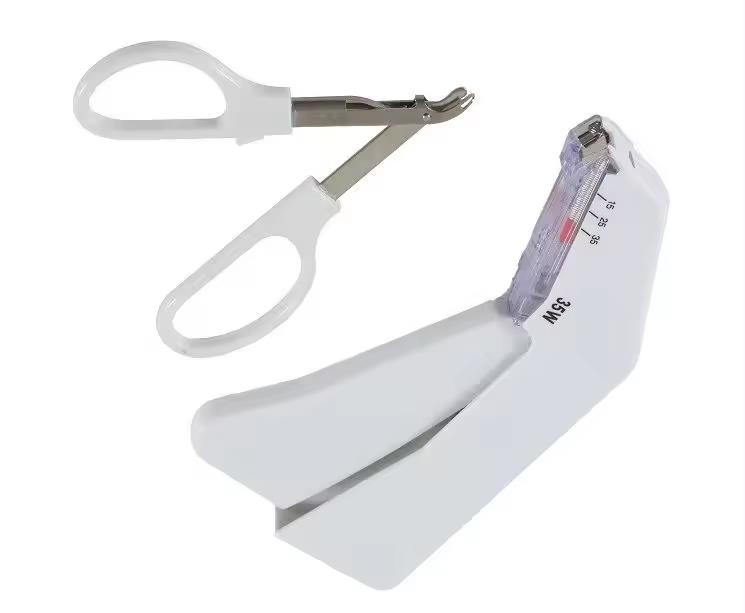Elevate your surgical practices with the quality and performance of Disposable Skin Stapler. Embrace precision, embrace safety, and redefine excellence in wound closure.

Disposable skin staplers are versatile tools commonly used in various medical settings for the closure of wounds. Here are some of their primary applications:
Surgical Procedures: Skin staplers are frequently used in surgical settings to close surgical incisions. They provide a fast and efficient method for securing the edges of the incision, helping to promote proper wound healing and reduce the risk of infection.
Trauma Care: In emergency medicine, skin staplers are valuable for quickly closing wounds caused by trauma, such as lacerations and abrasions. Their rapid deployment can be crucial in emergency situations to stop bleeding and stabilize the patient.
Minor Procedures: Skin staplers are often used for minor surgical procedures performed in outpatient settings or clinics, such as the removal of small skin lesions or the repair of minor injuries.
Wound Care: Healthcare professionals use skin staplers for closing wounds that are difficult to suture, such as wounds in areas with high tension or in patients with fragile skin. They can be particularly useful for closing wounds in elderly patients or those with compromised healing abilities.
Veterinary Medicine: Skin staplers are also employed in veterinary medicine for the closure of surgical incisions and wounds in animals. They offer similar benefits in terms of speed and effectiveness.
Podiatric Surgery: In podiatric surgery, skin staplers may be used for procedures involving the feet and ankles, where traditional suturing techniques may be more challenging due to the location and anatomy of the wounds.
Dermatological Procedures: Skin staplers can be utilized in dermatological procedures for the closure of skin biopsies, excisions, and other surgical interventions performed on the skin.
Overall, disposable skin staplers are essential tools in the medical field for the efficient closure of wounds across a wide range of clinical scenarios. They offer advantages such as speed, simplicity, and effectiveness in wound closure, contributing to improved patient outcomes and procedural efficiency.